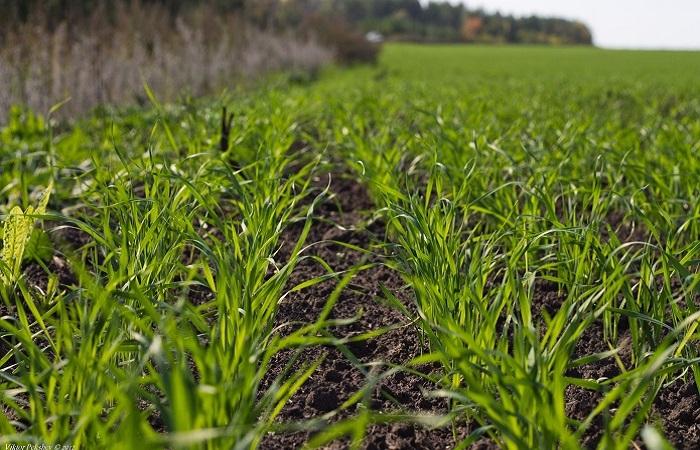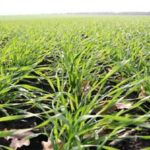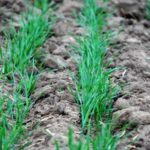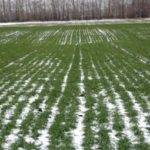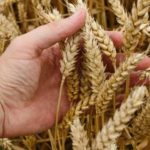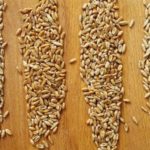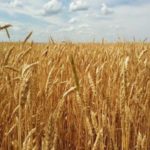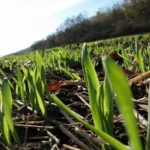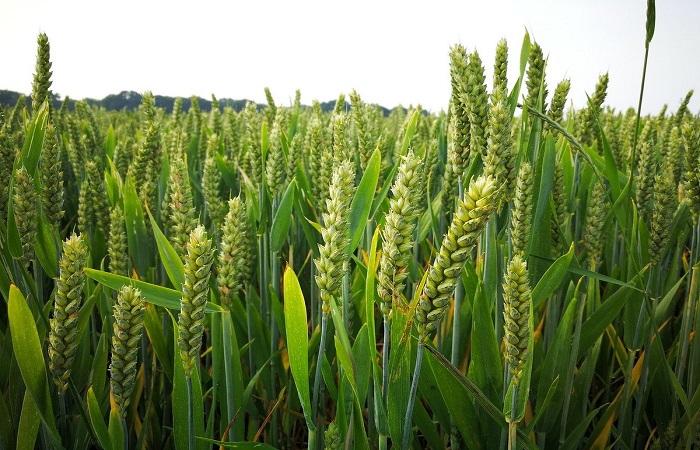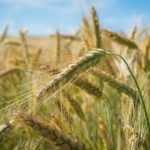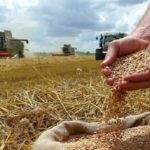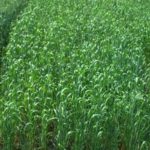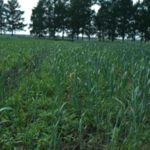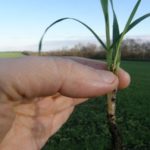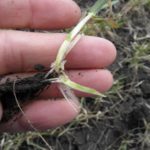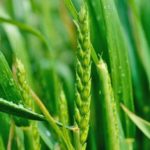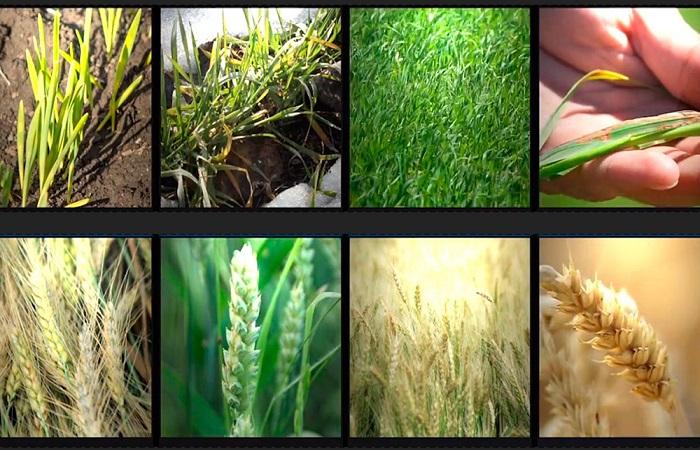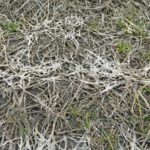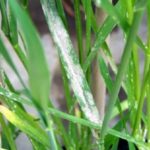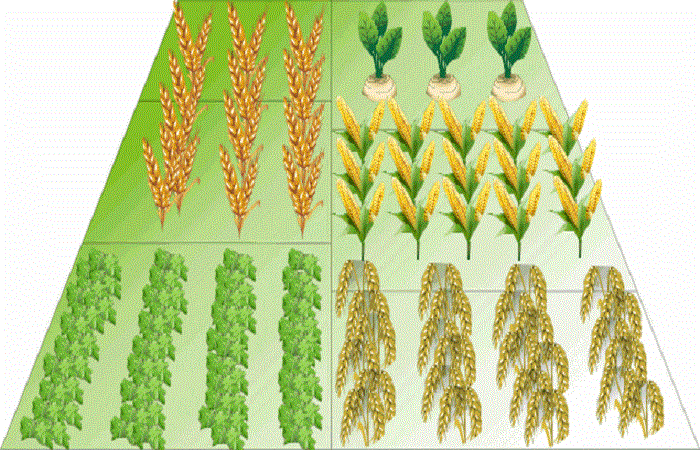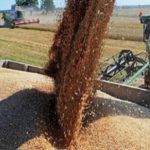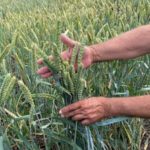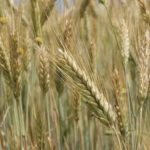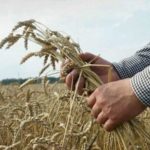Winter wheat is an annual plant that is planted from late summer to fall. They manage to germinate and take root before the first cold weather. At the same time, with the arrival of spring warmth, the crop continues its life cycle. Winter crops yield earlier than spring crops. To get a lot of high-quality grain, it is important to carry out planting work correctly and provide the wheat with good care.
History of origin and distribution
Cultivated wheat began to be grown in southwest Asia. Over time, it spread throughout the continent. Before the beginning of our era, wheat also reached Africa. Subsequently, Europeans began to grow the crop. They were the ones who brought grain to America. First he ended up in the South, and then in the North.
In the 18th and 19th centuries, the plant began to be cultivated on other continents. This is how it became popular in the agricultural system. Over time, different varieties and types of wheat appeared. Winter varieties include hard and soft varieties. The main difference between them is the level of hardness. There is also a difference in the amount of protein and starch.
National economic significance
Winter wheat occupies large agricultural areas. It is valued for its excellent nutritional properties. The composition of the grains meets all the requirements to meet human needs. It contains the following ingredients:
- proteins;
- fats;
- starch;
- vitamins of group B, PP, E;
- ash components;
- provitamins – carotene and ergosterol.
Winter wheat is used in various areas of life:
- Since cereals are mainly represented by soft varieties, flour is most often made from it. It is subsequently used to produce bread and bakery products. Winter wheat is used to make flour of the highest quality, the amount of fiber in which is at least 28%. Bread made from such raw materials is very nutritious and has excellent taste.
- Winter wheat is often used in the confectionery industry and is used to a lesser extent for making pasta. Durum wheat varieties are more suitable for making pasta.
- Wheat bran and concentrated feed for various types of farm animals are often prepared from cereals. Chopped straw is fed to cattle. Sometimes it is mixed with molasses.
- Straw is well suited as bedding in a barn. With the arrival of spring, wheat is used as green fodder.
- The plant is often used for crop rotation. It acts as an excellent predecessor for other crops.
- The culture is often used in the processing industry. The grains are suitable for the production of starch, alcohol, dextrin and other substances. Straw can be used to make mats, paper, and household items.
Differences from spring wheat
Winter and spring wheat have certain differences. They are as follows:
- Growing season. For winter crops it is longer than for spring crops, and amounts to 269-360 days. Spring wheat ripens in 85-100 days.
- Sowing dates. Winter varieties are planted from late summer to late autumn. Spring wheat can be planted from mid to late spring - the specific timing is determined by the climate zone. It is important to carry out planting work in a short time. This is due to the fact that wind and sun remove water from the ground. As a result, the plant cannot form roots and experiences a deficiency of valuable substances. Winter wheat is planted taking into account the weather. When sown early, the crop bushes too much, which provokes a decrease in resistance to frost and the influence of parasites. In the later stages, plantings do not have time to take root. This provokes a drop in yield.
- Soil requirements. It is recommended to plant winter wheat in fertile soil, which contains a lot of nitrogen, potassium and phosphorus. The formation of roots and further growth depend on the ability to obtain valuable substances.Wheat does not grow in swampy, podzolic, saline and peaty soil. Spring varieties are characterized by more powerful roots that better absorb valuable minerals. At the tillering stage, plants need phosphorus. They grow well in neutral and slightly alkaline soil. Acidic soils are not suitable for crops.
- Weather factors. Spring varieties are more dependent on air temperature fluctuations and rapidly changing weather. This is why it is so important to perform foliar feeding. Winter wheat is considered more environmentally flexible. However, at the tillering stage, it is necessary to apply fertilizing in a timely manner. Otherwise, there is a high probability of decreased productivity.
- Purpose. Both varieties are valuable in terms of application. Flour is made from soft varieties of winter wheat, which has excellent nutritional properties and high grain calorie content. Cereals and pasta are made from durum spring wheat. The crop is considered very valuable because it has excellent baking characteristics.
Morphological and biological features
Winter wheat is considered an annual plant that belongs to the Poa family. It is an erect grass that can be propagated by grains. The plant is characterized by fibrous roots that are located near the very surface of the earth. However, they are capable of penetrating into depths of 120-200 centimeters.
This type of wheat is characterized by long lanceolate leaves, on which there are parallel veins. The amount of foliage and its size are influenced by various factors - climate, variety, soil fertility.
Winter wheat leaves have 2 varieties:
- basal - formed from underground nodes;
- stem - grow on the ground part of the plant.
When cultivating this type of wheat, it is worth taking into account the botanical characteristics of the plant. This culture is considered one of the most demanding in terms of climate and the influence of external factors. During weather anomalies, there is a risk of destruction of most of the crops.
This wheat is a long-day crop that needs a lot of light. Thanks to the processes of photosynthesis, which occur exclusively under the influence of the sun, useful elements accumulate in the structure. With the optimal amount of lighting, the crop bushes and the leaves acquire a green tint. The following manifestations indicate a lack of sun:
- the lower internode grows;
- the tillering leaf appears in the lower part, which leads to a deterioration in the winter hardiness of the crop;
- in the case of spring light deficiency, the crop stretches too much and lies down;
- At the stage of grain ripening and filling, lack of light provokes a deterioration in the quality characteristics of the crop.
Depending on the stage of cultivation, the crop requires different temperatures. In general, winter wheat is a plant with average winter hardiness. In the presence of snow, it can withstand temperatures down to -25 degrees. If there is no snow, the plant dies at -16 degrees.
Germination of seed material occurs at a temperature of +1-2 degrees. However, for full development, the culture requires +12-15 degrees. Sowing work should begin when the average daily indicators reach +14-17 degrees.
Plants that have managed to bloom well and form 2-4 shoots are characterized by increased resistance to frost. In overgrown crops that have 5-6 shoots, frost resistance decreases.
With the arrival of spring, cultural development resumes. At this time, the optimal temperature is +12-15 degrees. If they exceed +25 degrees, the growth phases are disrupted.
At the flowering stage, winter wheat needs a temperature of +18-20 degrees. At +35-40 degrees and low air humidity, the grains become smaller. At the stage of fruit filling, the optimal parameters are +22-25 degrees.
During the entire growing season, winter wheat is characterized by its demands on moisture. However, the specific need for water is determined by the stage of development, density of plantings, and weather conditions. During the seed germination stage and during the emergence of sprouts, wheat requires a lot of moisture. Otherwise, plantings will be too sparse.
With a lack of moisture at the tillering stage, productive tillering also decreases. You should also pay attention to the amount of water during the period of stemming or eruption.With a lack of moisture, the parameters of the grain size of the ear decrease. This negatively affects the yield of the plant. At the same time, prolonged moisture is also undesirable - it inhibits the growth of the crop.
Phases of development
The growing season includes several stages of wheat growth. The sequence of cultural development is determined according to different systems - according to Zadox, Fikesh, Chang and Konzak. Today, the unified extended scale is most often used. The main stages of cultural development include the following:
- Emergence of seedlings. The optimal temperature for seed germination is +20-25 degrees. In such conditions, sprouts appear on days 7-9. However, for a more friendly appearance of sprouts, wheat requires +12-17 degrees. Thus, the duration of the germination stage is extended to 15-25 days.
- Tillering. This stage is typical for cereals. At this stage, the crop develops lateral shoots and nodal roots. Tillering of wheat occurs in autumn and spring. The process begins from the moment 3-4 sheets are formed. When temperatures drop to +6-10 degrees and sufficient humidity, plant growth slows down. At the same time, it begins to rapidly bush. The process is favorably influenced by the introduction of nitrogen substances and seed size. In favorable conditions, the culture forms 3-5 stems. The tillering node is the main organ. If it is damaged, there is a risk of crop death.
- Exit into a tube, or stemming. The beginning of this stage is considered to be the formation of the first stem node. It occurs 25-35 days after the start of spring growth. The node is located 2-5 centimeters from the ground surface. However, in cold and cloudy weather, crop growth stops.
- Heading.1 month after emerging into the tube, the moment of heading occurs. In this case, the ear emerges from the sheath of the top leaf. The intensity of this stage is affected by the volume of moisture and useful elements in the soil. This period is considered the most favorable for applying fungicides. Thanks to their use, it is possible to avoid the development of pathologies.
- Bloom. 2-3 days after the start of heading, winter wheat begins to flower. The duration of this stage is 1 week.
- Maturation. At this stage, grains are formed and poured. The duration of this stage is influenced by the wheat variety and weather conditions.
Popular varieties
There are many popular varieties of winter wheat, which can be described as follows:
- Favorite is a soft variety that takes 283-287 days to ripen. The plant is medium in size and can tolerate severe frosts. At the same time, the crop needs to be watered on time. From 1 hectare it is possible to collect 96-107 centners of grain.
- Podolyanka - it takes 305-310 days for the fruits to ripen. The size of the stem with ear reaches 95-99 centimeters. The grains are egg-shaped and red in color. The culture is resistant to frost and drought. The yield parameters are 60 centners per hectare.
- Shestopalovka is a soft variety of winter wheat. Plants reach 85-90 centimeters in height. It takes 280-285 days for the harvest to ripen. The advantage of the variety is resistance to frost, drought, shedding of ears, and diseases.
Growing technology
When cultivating winter wheat, it is necessary to create optimal conditions for it. First, the seeds are prepared for sowing. The suitable temperature for seed germination is +20-25 degrees. Disinfection is considered an important stage of pre-sowing preparation.
Compliance with crop rotation rules is of great importance. That’s why it’s so important to choose the right predecessors for winter wheat.
Caring for crops includes several procedures:
- Post-sowing rolling. This procedure is carried out from the moment the seeds hit the soil. It improves seed-soil contact, reduces water loss and makes seedlings more friendly.
- Harrowing. This procedure helps loosen the soil and clear spring shoots of weeds.
- Landing protection. In spring, sprouts should be fed with nitrogen and microelements. When there are large numbers of weeds, herbicides are used.
Diseases and pests
Winter wheat can suffer from the following pathologies:
- snow mold;
- brown rust;
- powdery mildew;
- ascochyta;
- septoria of ear and foliage;
- different types of smut;
- ophiopathic root rot.
Of the parasites, the crop is more susceptible to the following insects:
- aphid;
- bread ground beetles;
- cereal flies;
- Hessian flies;
- bread drinker
To cope with problems, you should use special substances. It is recommended to apply them at the sowing stage. If insects exceed the permissible norm, repeat treatment with insecticides is carried out.
Factors influencing increase and decrease in yield
To increase productivity, the condition of the plantings is assessed. When growing winter wheat, you should adhere to the following rules:
- alternate crop rotation;
- apply fertilizers correctly;
- treat the soil before planting;
- choose the right variety;
- Treat plantings from diseases and pests in a timely manner.
Yield parameters are negatively affected by the following factors:
- biological - the use of varieties that are prone to shedding, lodging and disease;
- agronomic – incorrect choice of variety depending on the region;
- technical – technical shortcomings that lead to a decrease in the quality of plowing.
How to store it correctly and for how long
Direct harvesting is considered a popular harvesting method. Sometimes a separate method is used. The first option is used when the crops are fully ripe and the humidity parameters are 18%. It is especially recommended to collect high varieties of wheat.
Winter wheat is a popular crop that is used for the production of flour and bakery products. To grow a plant successfully, it is important to adhere to basic recommendations.

